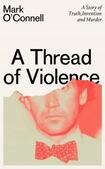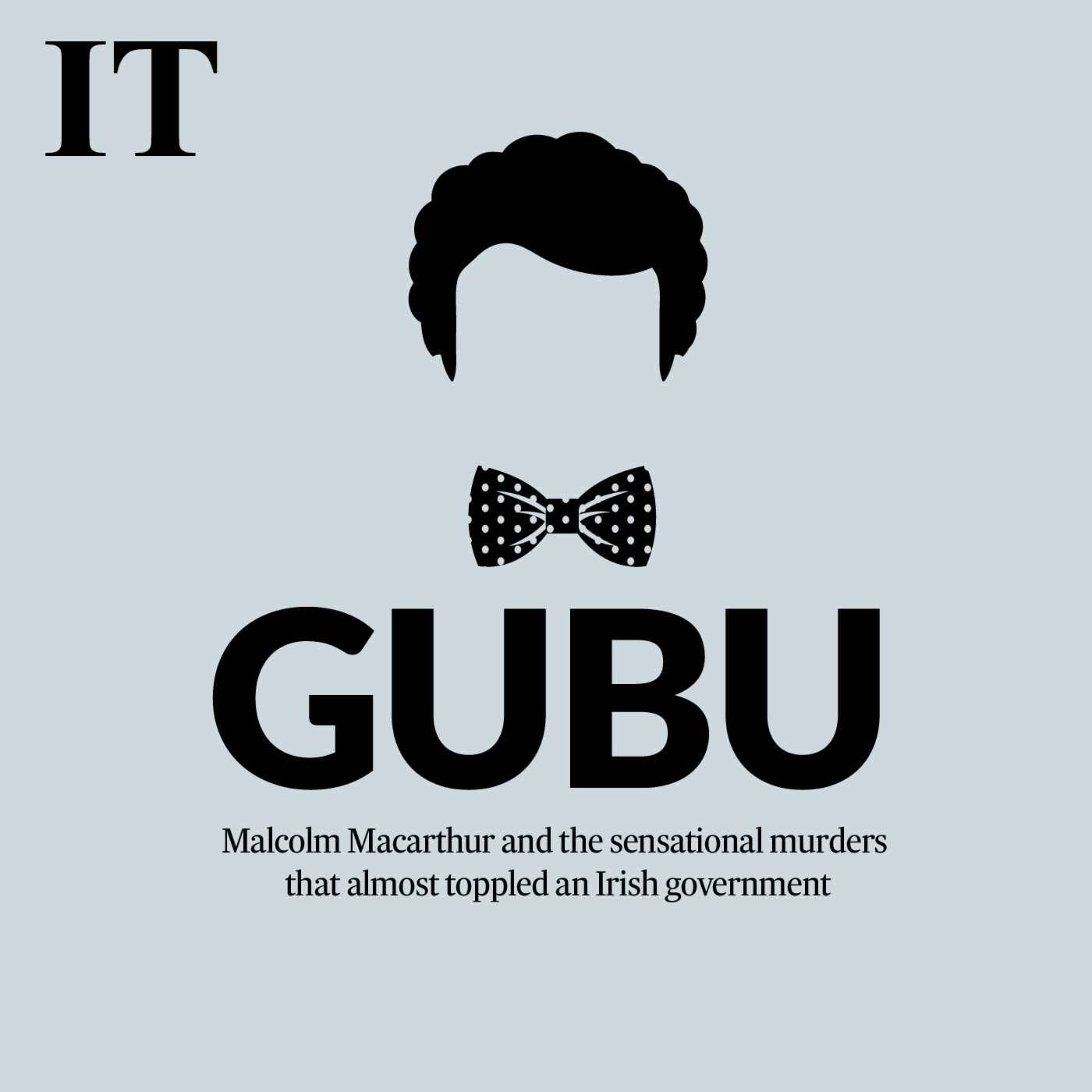
Sigmund Freud defined the uncanny as the sensation we experience when something we have previously only imagined appears before us in reality. In this sense, Mark O’Connell’s brilliant book about the double murderer Malcolm Macarthur is an exercise in the uncanny.
O’Connell has a tenuous connection to the Macarthur story: his grandparents lived in Pilot View, the upmarket apartment complex in Dalkey where, in 1982, Ireland’s most wanted man was arrested in the flat of its chief law officer, the attorney general Patrick Connolly. It is this haphazard conjunction that has made these lurid events, in the acronym that Conor Cruise O’Brien distilled from the words of Connolly’s boss, the then taoiseach Charles Haughey, so gubu: grotesque, unbelievable, bizarre and unprecedented.
The unbelievability is probably most resonant. The cliche that truth is stranger than fiction hangs over this story.
It is telling that when John Banville drew on the Macarthur story for his classic 1989 novel, The Book of Evidence, he had to tone it down to make the unbelievable more credible. His murderous aesthete, Freddie Montgomery, kills just once. Macarthur took at least two lives, those of Bridie Gargan, whom he beat to death with a hammer on a sunny afternoon in Phoenix Park because he wanted to steal her car; and Donal Dunne, whom he shot point-blank in the face in a bog outside Edenderry while stealing his shotgun.
‘I am divorced at 60, envious of my ex-husband’s new life and struggling with loneliness’
Look inside the most expensive house sold in Dublin so far this year
‘I learned about Irish time. People arrive late and think they are on time’
Bishop Casey’s Buried Secrets review: ‘He had no fear of being caught’
Both victims were just 27 years old. In the normal course of events, both should be alive now, perhaps entering pleasurable retirements with grandchildren and bucket lists of projects. To steal their possessions, Macarthur, almost as an afterthought, stole their futures.
The conjunction of this sheer savagery with Macarthur’s posh accent, silk dickie bow, Harris tweed suit and pretensions to suavity and scholarship is too much for good fiction. Add in the connection, via Connolly, to the Byzantine figure of Haughey. Then pile on the strange way the legal process unfolded, with an extremely short trial and no charges brought in relation to Dunne’s murder, and the unbelievable shades into the grotesque.

Episode one: The murder of Bridie Gargan
A killing shocks Ireland and prompts a manhunt that will eventually almost topple the government. Episode one of seven.GUBU is researched, reported and narrated by Harry McGee and edited by Enda O'Dowd.Sound mix by JJ VernonTitle music by OrakhalGraphics by Paul Scottirishtimes.com/podcasts/gubu
In 1982 the national imagination ran wild. It seemed that only a fool would accept there was nothing more to this tale than the official narrative of breathtakingly unlikely coincidence – even though Connolly’s involvement was indeed innocent.
Near the beginning of The Book of Evidence, Banville’s Freddie Montgomery remarks on “the way reality, banal as ever, was fulfilling my worst fantasies”. Macarthur’s evil is indeed banal, but it is inextricable from the dark fantasies of the time, the sense that if only the “real” story of his crimes could be discovered, we would know the truth about the State, that we would somehow make sense of a bizarre time when statues were moving and a witch trial was being conducted in the Kerry Babies case. Ireland seemed out of control, and it was all too tempting to believe that the mystery of Macarthur was the key to its secrets.
O’Connell is not of that generation – he was a toddler when all of this was going on. He comes to the story, essentially, through the veil of fiction. He did a PhD on Banville and it was via The Book of Evidence that he became fascinated by the man whom the novelist had transformed into Montgomery.
With other violent events, this might be a terrible place to start. It suggests a dreadful essay in postmodern cleverness, where there is no distinction between what happened and how it is represented, and morality is an embarrassing anachronism. But nothing could be further from O’Connell’s intent; in this weird case, the impulse to explore and unravel fictions is just the right instinct.
It gives O’Connell, when he tracks down Macarthur (who has been around Dublin since his release from prison in 2012) and gets him to tell his own story, a heightened awareness that it is indeed precisely that: yet another story, another linguistic construct in which the relationship between truth and fiction is murky, unstable and impossible to pin down with any certainty.
For what does seem reasonably clear is that Macarthur, when he committed the murders, was playing out a narrative he himself had already invented. Its genre was the daring crime caper. To avoid the ultimate horror – which is that, having spent all the money he inherited from his wealthy parents, he would have to work for a living like inferior people – he would carry out a bank job. It would be the thrilling tale of Malcolm the gentleman bank robber.
Macarthur’s articulacy is the eloquence of extreme evasion. To let him speak is, inevitably, to dignify a chilling kind of circumlocution
This would not be the story of his life – it would be merely a colourful episode, an out-of-the-ordinary interlude that he could, perhaps, use to amuse in his old age a sophisticated dinner party. It would be a chapter before and after, which he would be a kind, generous, engaging man who never hurt a fly.
“It was all,” as Macarthur tells O’Connell, “in the cerebral cortex.” Within that twisted cortex was a fully enclosed logic. Macarthur thought of himself as a sort of writer – he had his outline script but he needed a few plot details to be put in place. He needed a gun for the stickup and a car to make his getaway, but he had neither. So he would have to procure both.
And in this script, Bridie Gargan and Donal Dunne were minor characters. They existed only to advance the plot. They were almost reduced to inanimate objects: she was the car, he the gun. Their cries of pain and terror, if he heard them at all, were mere noises in the vivid melodrama of Malcolm’s audacious escapade.
O’Connell is acutely conscious of the moral ambiguity of giving a voice to a man who does not really take responsibility for his vile acts but rather, as O’Connell puts it, accepts that he committed murder but does not accept that he is a murderer. Macarthur retains the psychopath’s ability to distance himself from his actions, claiming of Gargan that “when I left her, she was sitting in the back seat, not exhibiting any distress”.
Macarthur’s articulacy is the eloquence of extreme evasion. To let him speak is, inevitably, to dignify a chilling kind of circumlocution.
Yet this is where O’Connell’s literary approach also functions as a moral strategy. He understands – and helps his readers to understand – exactly what Macarthur is doing with language, the way he remains, as O’Connell puts it, “extraordinarily capable of shaping memory to suit his purposes”.
And a part of that shaping process is, surreally, Macarthur’s reading of Banville’s novel. It becomes clear that one of the ways in which he has shielded himself from the reality of his crimes is by placing Freddie Montgomery between it and himself.
[ Dún Laoghaire news vendor had role in finding Malcolm MacarthurOpens in new window ]
Some of what he “remembers” is from the novel. He recalls that “some columnist” wrote, of the crowds that gathered to hurl abuse at him after his arrest, that “my presumed attitude towards the protesters was, Oh, it was one of theirs that I killed”. But no columnist wrote this: it’s a line of Montgomery’s in The Book of Evidence.
This is what makes A Thread of Violence such a remarkable book. If it begins in the genre of “true crime” – let’s find the murderer and see if he will tell us what happened – it becomes an exploration of the human capacity to avoid truth.
O’Connell has to get close to Macarthur to write his book, but he retains his own kind of killer instinct, a ruthless distancing that keeps the allure of violence at bay. He does not forget that behind all of this imaginative complexity, there is a great failure of the imagination: Macarthur’s narcissistic inability to understand his victims as anything other than disposable instruments.
O’Connell knows that he cannot avoid the ultimate injustice: Macarthur haunts contemporary Dublin because he is alive and free to roam the streets as a strange revenant from gubu. Gargan and Dunne cannot be revenants because they are never coming back.
But the book itself is haunting in its dissection of the mechanisms that allow human beings to dehumanise others. O’Connell keeps his focus – and our riveted attention – on Macarthur, but this microcosm of malevolence grows into a much larger contemplation of the relationship between the disregard for truth and the disregard for real human lives.
A Thread of Violence ends up as its own book of evidence – not just for the trial that those bereaved by Macarthur were never granted by the State, but for the consequences of trying to bend reality to suit the purposes of power. Those consequences are being played out so vividly in our own public worlds that, even if they are grotesque, they are sadly not unbelievable.
At the end of The Book of Evidence, Montgomery is asked how much of his account is true. He replies: “All of it. None of it. Only the shame.” O’Connell’s achievement is to reinforce the contradiction in the first two of those claims while allowing us to feel the ferocious force of the third.
Further reading
The Boss (Poolbeg, 1997) by Joe Joyce and Peter Murtagh Still the essential account of Charles Haughey’s extraordinary government of 1981-1982, with its mad whirl of cover-ups and plots. It provides the contexts in which most Irish people at the time could not believe that there was less to the connection between the attorney general and the murderer than met the eye.
The Murderer and the Taoiseach (Hachette Books Ireland, 2023) by Harry McGee Following his superb GUBU podcast, this is McGee’s forensic retelling of the Macarthur story as it unfolded through Irish political, journalistic and legal life in 1982 and subsequently. McGee’s encounter with Macarthur is much briefer and less probing than O’Connell’s but his focus is in any case more on the public aspects of the case, not least the detective work that led the Garda to the attorney general’s door.
The Journalist and the Murderer (Knopf, 1990) by Janet Malcolm Malcolm’s critique, originally a series of articles in the New Yorker, explores the ethics of another book, Joe McGinnis’s Fatal Vision, itself based on the author’s relationship with a killer whom he befriended. The man was facing trial for the murders of his wife and two daughters. Malcolm’s ferocious exploration of the way McGinnis won the killer’s trust is a map of the ethical minefield that O’Connell so assiduously avoids.





